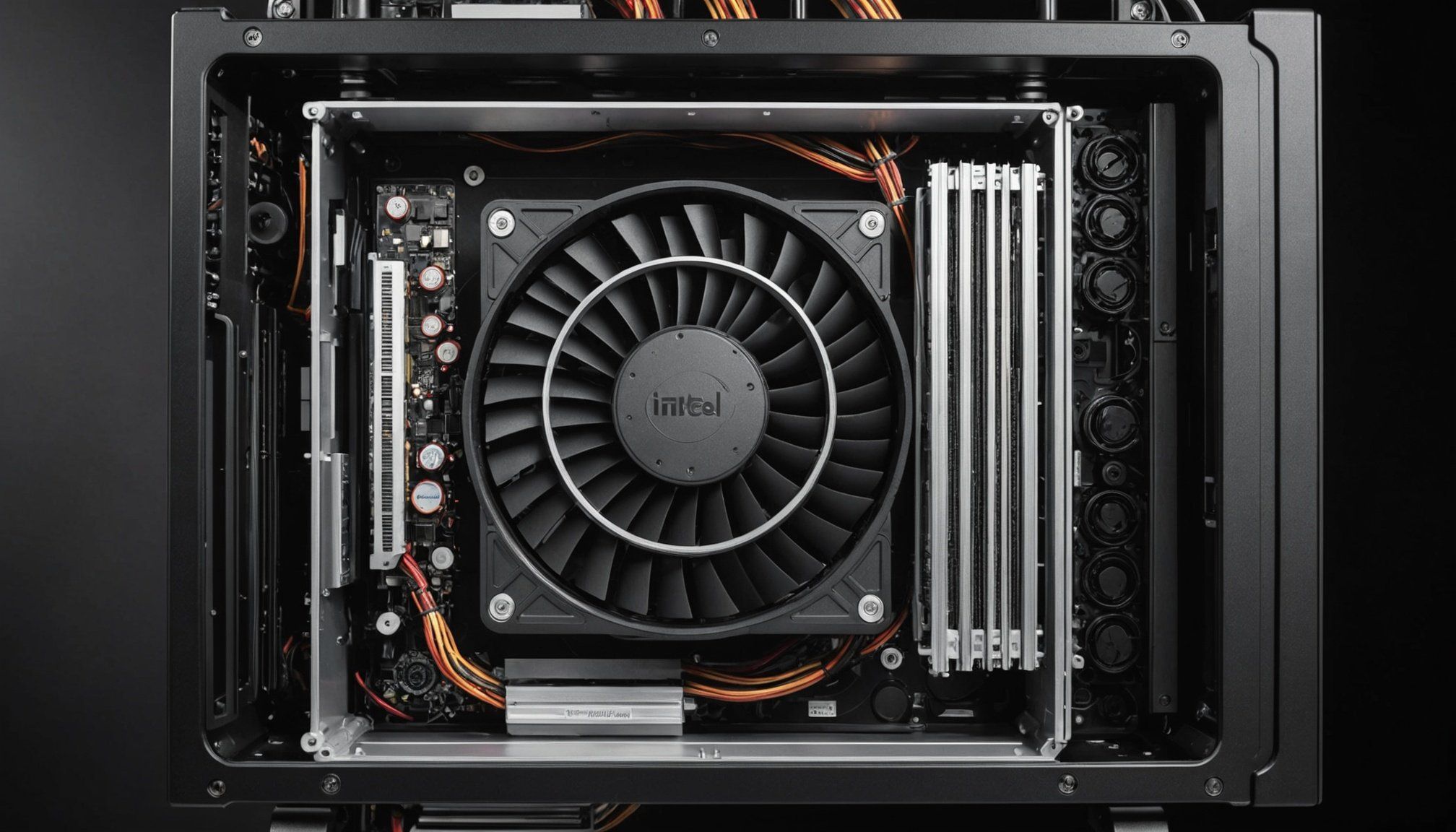Understanding Airflow Dynamics in Compact SFF Cases
When it comes to Small Form Factor (SFF) cases, airflow is a crucial component in preventing overheating and ensuring maximum performance. The limited space in these cases makes efficient thermal management essential. The compact nature of SFF cases impacts how effectively air circulates, challenging both case design and component positioning to maintain optimal temperatures.
Importance of Airflow
A well-designed airflow system ensures components run smoothly without compromising their lifespan. Proper airflow in SFF cases enhances system stability and performance, reducing thermal throttling. Managing airflow involves strategically placing fans and vents to maximize cooling efficiency while minimizing noise.
Impact of Compact Design
Compact designs can restrict airflow, leading to hotspots where heat accumulates. This constraint requires innovative case design to facilitate better circulation. Given the small space, every component’s placement and fan direction is vital. Efficient airflow circuits must push hot air out and pull cooler air in seamlessly.
Key Components: Intake, Exhaust, and Circulation
- Intake Fans: Bring cool air from outside into the case.
- Exhaust Fans: Expel hot air, preventing recirculation.
- Circulation: Balances intake and exhaust for even temperature distribution.
Thoughtful attention to these elements ensures SFF cases maintain effective thermal management despite spatial limitations. By prioritizing these aspects, users can optimize their systems for better performance and longevity.
Also to read : Comprehensive guide to setting up dell optiplex 7070 micro for zoom rooms: a step-by-step approach
Cooling Solutions for Intel Core i7-10700K in SFF Builds
Managing the heat of an Intel Core i7-10700K in a small form factor (SFF) case can be challenging. Let’s delve into the options available for cooling solutions for this powerful processor in compact builds.
Recommended Air Coolers
For those prioritizing simplicity and affordability, air coolers can offer solid thermal performance. Notable models include the Noctua NH-L9x65, renowned for its compact design and impressive cooling capabilities. Despite their bulkier presence, air coolers are generally easier to install and maintain compared to liquid cooling options. Nevertheless, space constraints in SFF cases could limit the choice of models.
Recommended Liquid Coolers
If superior thermal performance is crucial, consider opting for liquid coolers. Models like the Corsair H60 provide efficient heat dissipation, essential for high-power CPUs. These coolers are praised for their ability to handle high loads with reduced noise. However, installation in SFF cases can be intricate, requiring careful planning and measurement to ensure a proper fit.
Passive Cooling Options
In certain scenarios, passive cooling can offer quiet operation without the need for fans. While their thermal performance is limited compared to active coolers, models like the Streacom FC8 offer a silent cooling solution for less demanding scenarios. The primary disadvantage is their inability to sustain lower temperatures under heavy loads, which can be a concern for intensive tasks.
Effective Case Fan Configurations
Understanding the placement and choice of case fans in small form factor (SFF) cases is crucial for optimal performance. Effective fan placement ensures a balanced airflow, which is essential for preventing overheating and maintaining efficiency. In an SFF case, there is limited space, making it imperative to strategically position fans for maximum air circulation.
Optimal fan placement involves positioning intake fans at the front or bottom of the case to pull in cool air, while exhaust fans should be placed at the rear or top to expel warm air. This configuration supports a front-to-back airflow pattern, efficiently guiding airflow through heat-generating components.
Choosing the correct fan size and type is equally important. Larger fans can move more air at lower speeds, which reduces noise. However, SFF cases often require smaller fans. Here, static pressure fans are invaluable, especially when air must pass through heatsinks or other obstacles within the compact space.
In SFF environments, static pressure fans are preferred over airflow fans when there are obstructions in the airflow path. Static pressure fans are designed to perform efficiently in restricted spaces by pushing air through tight gaps. This makes them ideal for SFF cases where space constraints are a factor, ensuring effective cooling even in challenging environments.
Thermal Management Strategies
Effectively managing thermal conditions is crucial to maintaining the performance and longevity of your hardware.
Utilizing Thermal Paste Effectively
Applying thermal paste efficiently ensures optimal heat dissipation. Begin by cleaning any old paste with isopropyl alcohol. Then, apply a small amount of new paste — typically the size of a pea — to the center of the CPU. Spread it evenly using a plastic card or allow the pressure of the heat sink to distribute it. Correct application ensures that the paste fills in microscopic imperfections on the CPU surface and heat sink, promoting better contact and improving thermal conductivity.
Monitoring CPU Temperatures
Stay informed on your system’s heat levels with effective performance monitoring tools. Software such as HWMonitor, Core Temp, or SpeedFan provides insights into CPU and system temperatures, enabling real-time temperature management. Establish a baseline of normal operating temperatures, so anomalies can be identified quickly. Automatic alerts can be configured when temperatures exceed critical thresholds, facilitating prompt action.
Case Ventilation Enhancements
Enhancing case ventilation aids in maintaining low internal temperatures. Start by ensuring that cables are neatly bundled to avoid obstructing airflow. Install additional fans or replace existing ones with more efficient models to promote better air circulation. Positioning fans to create a consistent flow of air — typically pulling cooler air from the front and expelling hot air from the back or top — maximizes thermal efficiency.
Compatibility Considerations for SFF Cases
Selecting SFF compatibility-focused hardware is critical to ensuring efficient airflow in compact cases. Choosing components not only affects performance but also system lifespan by preventing overheating issues. As the hardware selection process unfolds, pay special attention to the sizing of your components to maintain a balance between performance and heat dissipation.
Size Constraints and SFF-Friendly Components
When dealing with Small Form Factor (SFF) cases, component sizing becomes paramount. The inherent space limitations impose constraints on the dimensions of CPU coolers and other critical parts. Opt for low-profile CPU coolers designed specifically for SFF environments. Ensuring a well-fitted cooler will optimise airflow and maintain system stability.
In addition, make informed decisions on SFF-friendly motherboards and GPUs. Motherboards tailored for SFF cases not only fit perfectly but also integrate seamlessly with other components. Look for models that come with features like reinforced PCIe slots, as these offer better support for GPUs.
For the GPU selection, compact designs that provide robust performance without overcrowding the interior of the case are ideal. Numerous manufacturers offer GPUs with shortened PCBs to cater specifically to SFF case requirements.
By adhering to these compatibility considerations, you can create an optimally functioning SFF system with improved operating efficiency and longevity.
Limitations and Alternatives to Consider
When constructing Small Form Factor (SFF) builds, enthusiasts often encounter a variety of limitations, primarily related to space and heat management.
Common Limitations of SFF Builds
A prominent challenge is the thermal constraints due to confined spaces. Limited airflow can lead to overheating, affecting performance and longevity of components. Additionally, restricted interior space often compromises the choice of GPUs or cooling systems, limiting configuration options. For instance, many high-performance air coolers might simply not fit within the compact dimensions of an SFF case.
Alternative Compact Cooling Solutions
To address thermal issues, consider alternative cooling methods, such as all-in-one liquid coolers designed specifically for compact builds. These systems efficiently manage heat without occupying significant space. Other innovative options include custom loop solutions, which, despite being more complex, allow for superior customization and performance. Passive cooling, through heat sinks with maximised surface area, can be a whisper-quiet option for less intensive tasks.
Future Upgrade Paths
Considering future upgrade options is crucial when planning an SFF build, to ensure scalability and technological adaptability. One strategy involves selecting modular components or components known for upgradability. This proactive approach ensures the build remains viable as newer, more powerful hardware is released, extending the lifespan and usability of your compact build.











